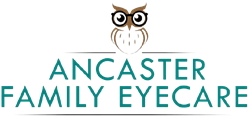 The doctors at Ancaster Family Eyecare have extensive experience in the pre-operative evaluation and post-operative care of LASIK and other vision correction procedures.
The doctors at Ancaster Family Eyecare have extensive experience in the pre-operative evaluation and post-operative care of LASIK and other vision correction procedures.
We will evaluate your eyes and discuss your visual goals to help determine if you are an appropriate candidate for LASIK, PRK or Cataract Refractive Technology. If you have appropriate goals and there are no contraindications for the procedure (such as dry eye), we will recommend a pre-operative evaluation to determine suitability for refractive surgery. This evaluation includes:
- Counseling on refractive surgery options
- Eye dominancy testing
- Review of eye history and refractive stability
- Medical evaluation of the cornea and eye
- Current Refraction Status
If after the pre-operative evaluation, the decision is made to proceed with surgery, your information will be forwarded to the surgeon, a pre-surgery consult with a surgeon will be scheduled. Post-operative management will be provided by our doctors and includes multiple visits over a period from the date of surgery to include medical evaluation and management of the vision and corneal healing. Evaluation of any additional needs such as reading glasses, sunglasses, or enhancement laser procedures is also included.
LASIK is currently the most popular vision-correcting or "refractive" surgery available. But there are other options as well. We will help you find the ideal solution for your problem and partner with the best surgeon to perform your procedure.
Introduction to LASIK
LASIK is the most commonly performed refractive surgery procedure. You may hear people calling it "LASIX," but the correct name is LASIK, which is short for "laser-assisted in situ keratomileusis."
Why is it so popular? LASIK has advantages over other vision correction procedures, including a relative lack of pain afterward and the fact that good vision usually is achieved by the very next day.
An instrument called a microkeratome is used in LASIK eye surgery to create a thin, circular flap in the cornea. Another, newer way of making the flap is with a laser.
The surgeon folds the hinged flap back out of the way, then removes some corneal tissue underneath using an excimer laser. The excimer laser uses a cool ultraviolet light beam to precisely remove ("ablate") very tiny bits of tissue from the cornea to reshape it.
When the cornea is reshaped in the right way, it works better to focus light into the eye and onto the retina, providing clearer vision than before. The flap is then laid back in place, covering the area where the corneal tissue was removed.
Both nearsighted and farsighted people can benefit from the LASIK procedure. With nearsighted people, the goal is to flatten the too-steep cornea; with farsighted people, a steeper cornea is desired. Excimer lasers also can correct astigmatism by smoothing an irregular cornea into a more normal shape.

